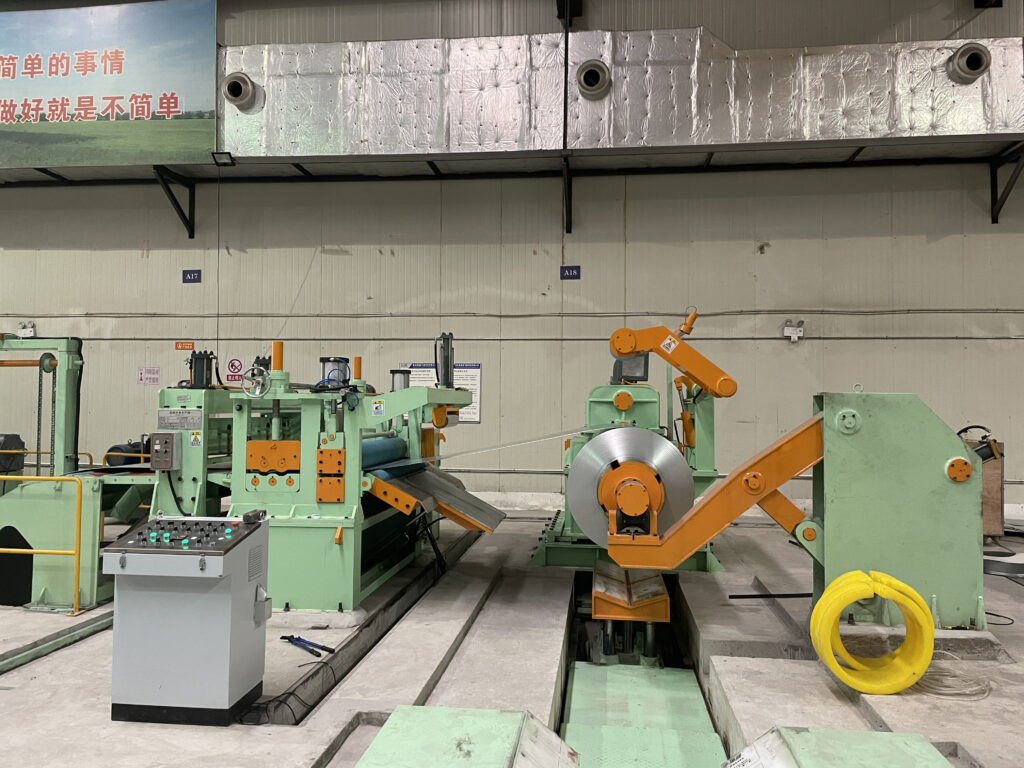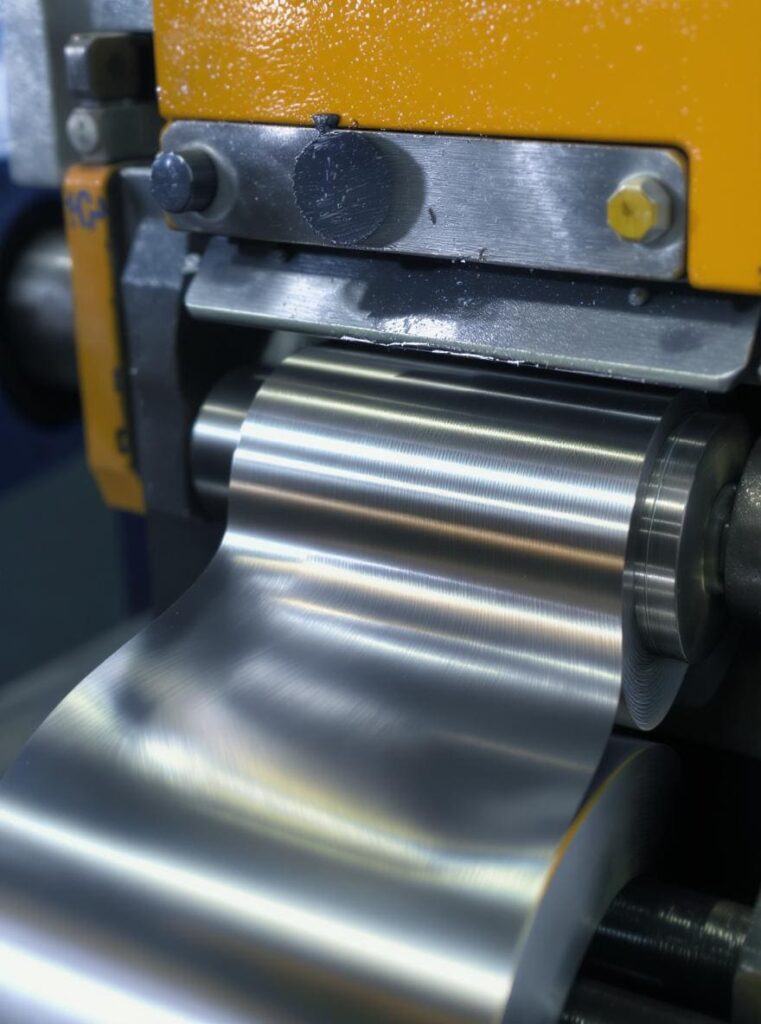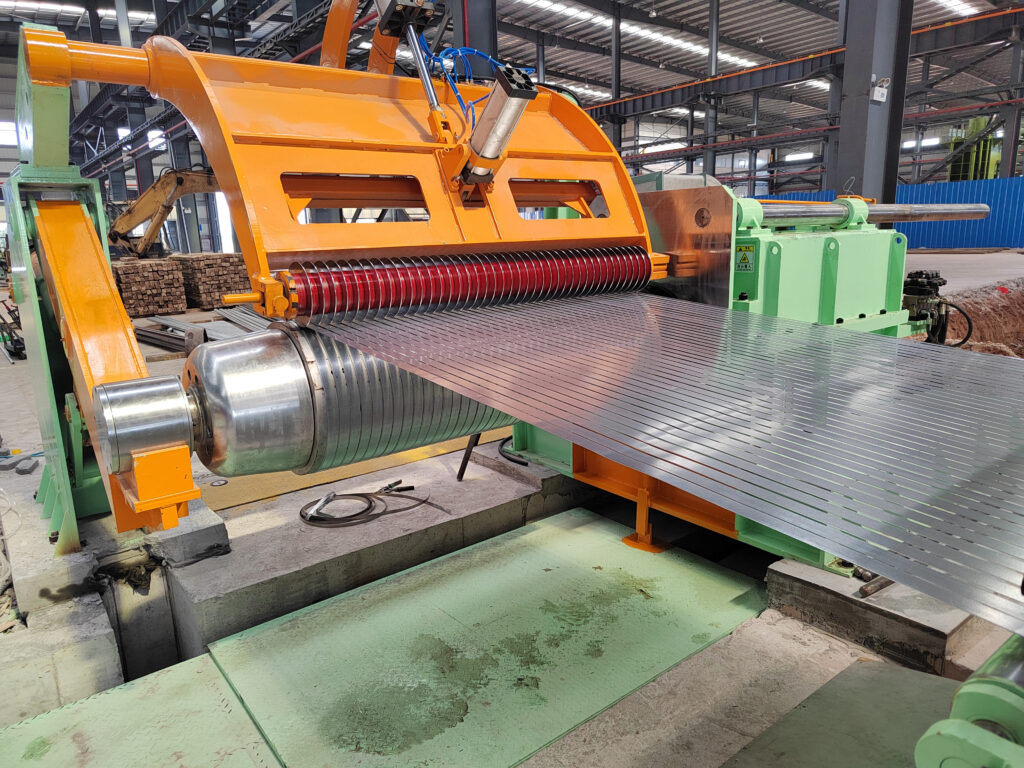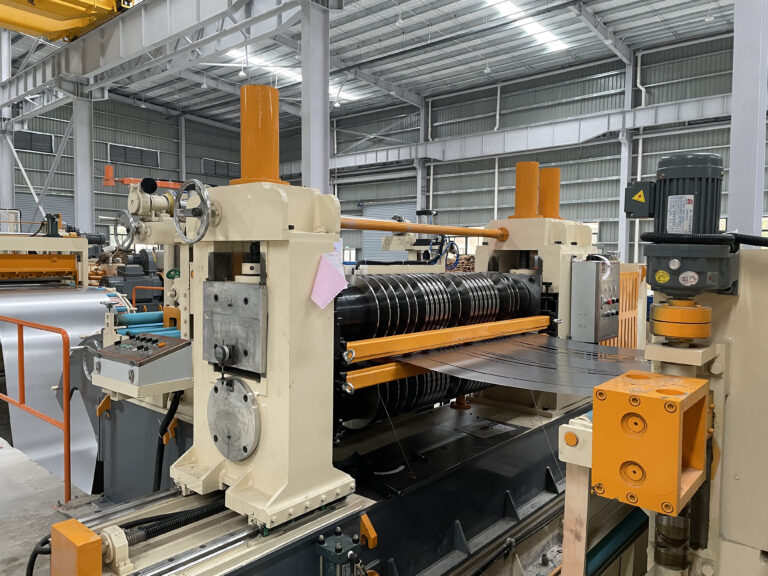Which Materials Can MD Series Slitting & Shearing Machines Process?
Discover MD-850 to MD-2200 compatibility with steel, aluminum, copper and more. Learn precision settings, troubleshooting tips, and ISO-aligned best practices.
Metal slitting and shearing are critical steps in converting broad metal coils or sheets into precisely sized strips and blanks. The MD series from MaxDoMachine—spanning MD-850, MD-1350, MD-1650, and MD-2200—handles a remarkably diverse range of materials, including carbon steel, stainless steel, aluminum alloys, copper, brass, and composite or coated panels. By tailoring knife clearance, tension, blade material, and feed parameters, these lines accommodate thicknesses from 0.3 mm up to 12 mm and widths from 20 mm to 2 150 mm. This article examines the materials each model processes best, outlines common processing challenges, and presents proven solutions and case examples to guide equipment selection and process optimization.
Overview of MD Series Specifications
All MD slitting machines operate on a similar principle: an unwinder feeds the coil under controlled tension into a slitting section where rotary knives cut continuous strips. Following slitting, recoilers or downstream shearing units wind or cut the strips to length. Precision tension control, knife alignment, and robust frame design ensure repeatable strip widths and clean edges.

Model Comparison:
| Model | Working Width | Thickness Range | Coil Weight Capacity | Speed Range | Installed Power |
|---|---|---|---|---|---|
| MD-850 | 20 – 820 mm | 0.3 – 12 mm | 10 – 35 t | 1 – 250 m/min | 138.5 kW |
| MD-1350 | 300 – 1 300 mm | 0.3 – 12 mm | 10 – 35 t | 1 – 250 m/min | 318.5 kW |
| MD-1650 | 300 – 1 650 mm | 0.3 – 12 mm | 10 – 35 t | 1 – 250 m/min | 422.5 kW |
| MD-2200 | 300 – 2 150 mm | 0.3 – 12 mm | 10 – 35 t | 1 – 250 m/min | 422.5 kW |
This range supports light-gauge continuous slit coils for precision strips as well as heavier plate cut-to-length operations when paired with downstream shear units.
Materials and Optimal Processing Conditions
Carbon Steel (Cold-Rolled & Galvanized)
Carbon steel coils represent the most common feedstock. For gauges from 0.3 mm to 12 mm:
- Slitting: Maintain blade clearance at 5–8% of material thickness to minimize burr and maintain strip edge quality. Use hardened tool steel knives for coatings or galvanized surfaces to reduce wear.
- Shearing: Adjust shear blade overlap for thickness; an overlap of 15–20% of thickness ensures clean cuts without deformation.
Case Example
An automotive parts supplier processes cold-rolled steel strips (0.5 mm) on an MD-850. By installing TiN-coated knives and fine-tuning tension profiles, burr height was reduced by 30% and edge radius remained under 0.1 mm, cutting post-slitting polishing needs by half.
Stainless Steel (300 & 400 Series)
Stainless steels exhibit high work-hardening rates and require robust knives:
- Blade Material: Use W18Cr4V or similar high-speed steel knives; consider cryogenic or PVD coatings to extend tool life.
- Tension: Increase line tension by 20–30% over carbon steel settings to maintain strip flatness and prevent buckle.
- Coolant: Apply minimal quantity lubrication (MQL) at knife interface to reduce galling without excessive coolant handling.
Solution Summary
Optimizing tension zones and upgrading from standard HSS to coated tools doubles knife life and maintains ±0.1 mm slit tolerance on 2 mm stainless coils.
Aluminum Alloys (1xxx, 3xxx, 5xxx Series)

Aluminum’s low hardness and ductility demand different handling:
- Knife Clearance: Decrease clearance to 3–5% of thickness to limit edge rollover.
- Surface Protection: Install polyurethane-coated pinch rollers to avoid marking.
- Debris Management: Fit air-knife blowers downstream to clear chips and prevent re-ingestion.
A rooftop solar panel manufacturer uses an MD-1350 for 1.2 mm 5xxx-series strips. Swapping standard blades for aluminum-specific knives and adding coil car vacuum suction reduced material waste by 25%.
Copper & Brass
Copper’s high ductility and adhesion require:
- Shear Angle Adjustment: Increase shear angle by 2°–4° to promote shearing over ductile tearing.
- Knife Coatings: Use DLC coatings to resist adhesion.
- Tension Profile: Employ a multi-zone tension controller—low entry tension, ramp-up through knives, then relaxation—to avoid necking.
An electronics components manufacturer slits 0.5 mm copper on an MD-1650. Implementing a stepped tension profile eliminated strip waviness and maintained dimensional accuracy within ±0.05 mm.
Composite and Coated Panels
Processing composite sandwich panels or pre-painted galvanized coils involves:
- Anti-Chipping Guides: Add entry guide rollers with low-friction liners.
- Blade Clearance: Increase clearance slightly (8–10%) to prevent delamination at cut.
- Peel Strength: Adjust slitting speed to match coating adhesion properties.
A white goods OEM slits painted galvanized coils on an MD-2200. By slowing slitting speed by 20% and applying an air-knife overcoat air jet, they prevented paint cracking and met Class 1 finish quality.
Underlying Principles and Control Strategies

Tension Control and Feedback
Modern MD series lines utilize load-cell or dancer-roll feedback in multiple zones—unwind, slitting, and recoiler—to maintain consistent strip tension within ±1%. Programmable Logic Controllers (PLCs) adjust AC vector drives in real-time, compensating for coil diameter changes and material modulus variations.
Knife Alignment and Clearance
Knife holders feature micrometer adjustment screws enabling ±0.01 mm positioning precision. Clearance is set manually or via optional automatic setting systems. Proper parallelism between knives and backup rollers (within 0.02 mm over machine width) prevents edge taper.
Safety and Standards Compliance
MaxDo slitting lines comply with CE machinery directives and OSHA 1910.217 for shearing devices. Complete guarding, light-curtain interlocks, and emergency stops on both sides of slitting stations protect operators. Routine safety audits, per ISO 12100 risk assessment protocols, ensure ongoing compliance.
Operation, Maintenance, and Troubleshooting
Installation and Commissioning
- Foundation: A reinforced concrete plinth (M 20 grade) with anchor bolts per drawing specifications ensures vibration damping.
- Alignment: Laser alignment tools set rail and level tolerances within ±0.5 mm.
- Electrical: Power distribution units sized per model (e.g., 480 VAC 3-phase for MD-1650) and grounded per IEC 62305.
Daily Operation Steps
- Inspect blade condition and set clearance per material recipe.
- Load coil onto hydraulic decoiler; secure with spindle locking.
- Set tension zones on HMI per material type.
- Run test slit of 1 m; measure edge quality and adjust clearance/tension.
- Start production—monitor tension/motor load alarms.
Preventive Maintenance
- Weekly: Check blade wear, gearbox oil level, tension sensor calibration.
- Monthly: Verify knife holder parallelism; inspect roller bearings.
- Annually: Replace slitting bearings, recalibrate PLC-to-drive feedback loops.
Common Faults and Solutions
- Edge Burrs: Increase clearance or reduce line speed; verify blade sharpness.
- Strip Wandering: Balance tension zones; inspect roller alignment.
- Knife Heating: Ensure proper blade material; apply intermittent air cooling.
Case Study: Automotive Coil Processing
A tier-1 automotive supplier installed an MD-1650 line to slit 2.0 mm dual-phase steel for bumper reinforcements. By developing specific tension profiles and using cryo-treated knives, the line achieved 0.12 mm slit tolerance at 200 m/min throughput, reducing scrap by 18% and delivering ROI in under 14 months.
Conclusion
MaxDoMachine’s MD series slitting and cutting systems demonstrate exceptional versatility for processing a broad spectrum of metals and specialty panels. Through precise control of tension, knife clearance, and blade technology, operators can reliably slit or shear materials from ultra-thin aluminum to robust 12 mm steel and delicate composites. For full specifications, technical drawings, and after-sales support, explore our product pages:
- MD-1650 Slitting Line: https://maxdomachine.com/product/md-1650/
- MA-850 Slitting Machine: https://maxdomachine.com/product/ma-850/
Harness MD series performance to streamline your metal processing and achieve consistent high-quality output.




